
Jawline contouring has become one of the most sought-after aesthetic treatments for patients of all genders. A defined jawline contributes significantly to overall facial balance, perceived youth, and gender-specific attractiveness. For medical aestheticians, mastering the art and science of non-surgical jawline definition is now essential, whether you're treating early signs of jowling, age-related volume loss, or genetically weak lower face structure.
In this guide, we’ll explore advanced jawline filler techniques, optimal toxin use, patient assessment strategies, and key anatomical considerations. We'll also compare filler vs Botox for jawline treatments and address frequently asked questions to support your clinical decision-making.
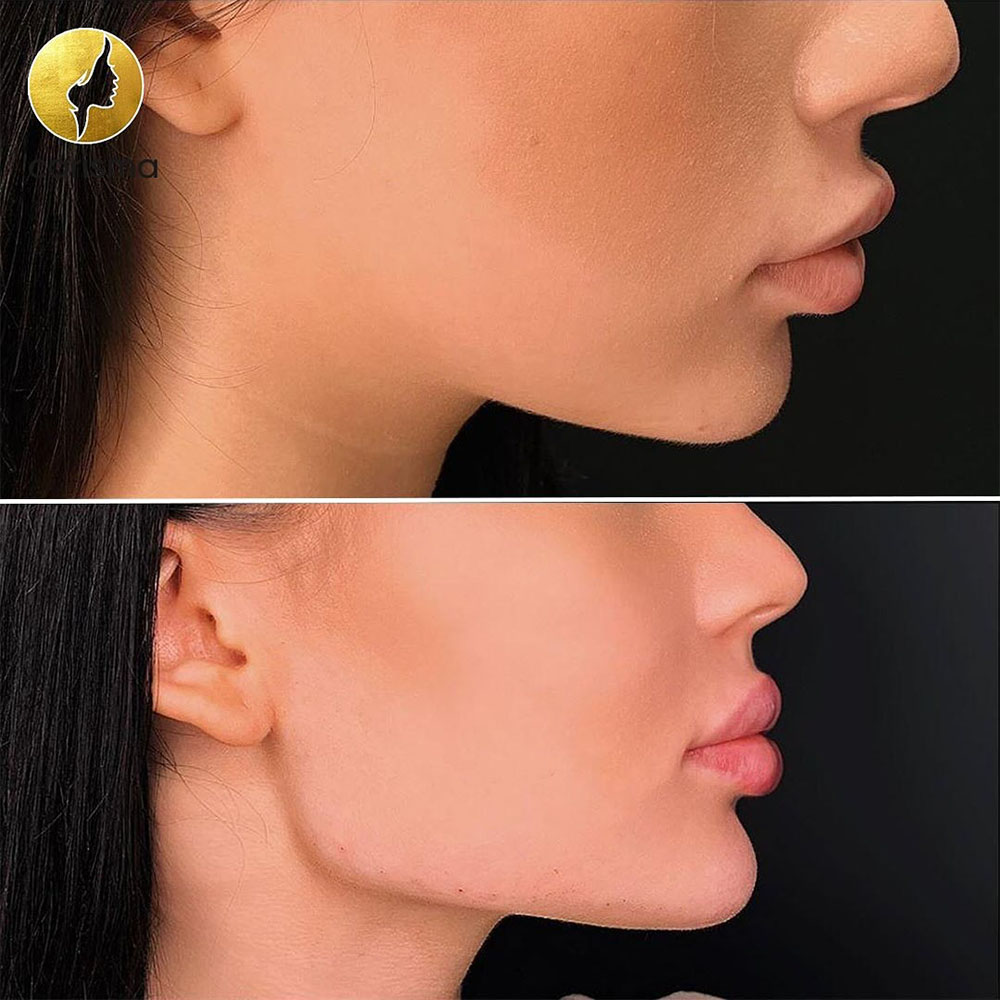
Why Jawline Contouring Matters
The jawline frames the lower third of the face. Its definition, or lack thereof, can alter perceptions of age, attractiveness, and even health. As aesthetic trends shift toward sharper, more sculpted lower faces, demand for jawline contouring fillers has grown significantly.
Here’s why patients are seeking it:
- Facial symmetry and balance: A well-defined jawline enhances the overall facial silhouette.
- Gender affirmation: Masculine and feminine ideals differ; males often seek angular, broad jawlines; females prefer sleek, tapered contours.
- Non-surgical corrections: Jawline contouring addresses issues like jowls, skin laxity, or a weak chin without surgery or extended downtime.
The treatment is particularly impactful when combined with midface rejuvenation, chin enhancement, or skin-tightening modalities.
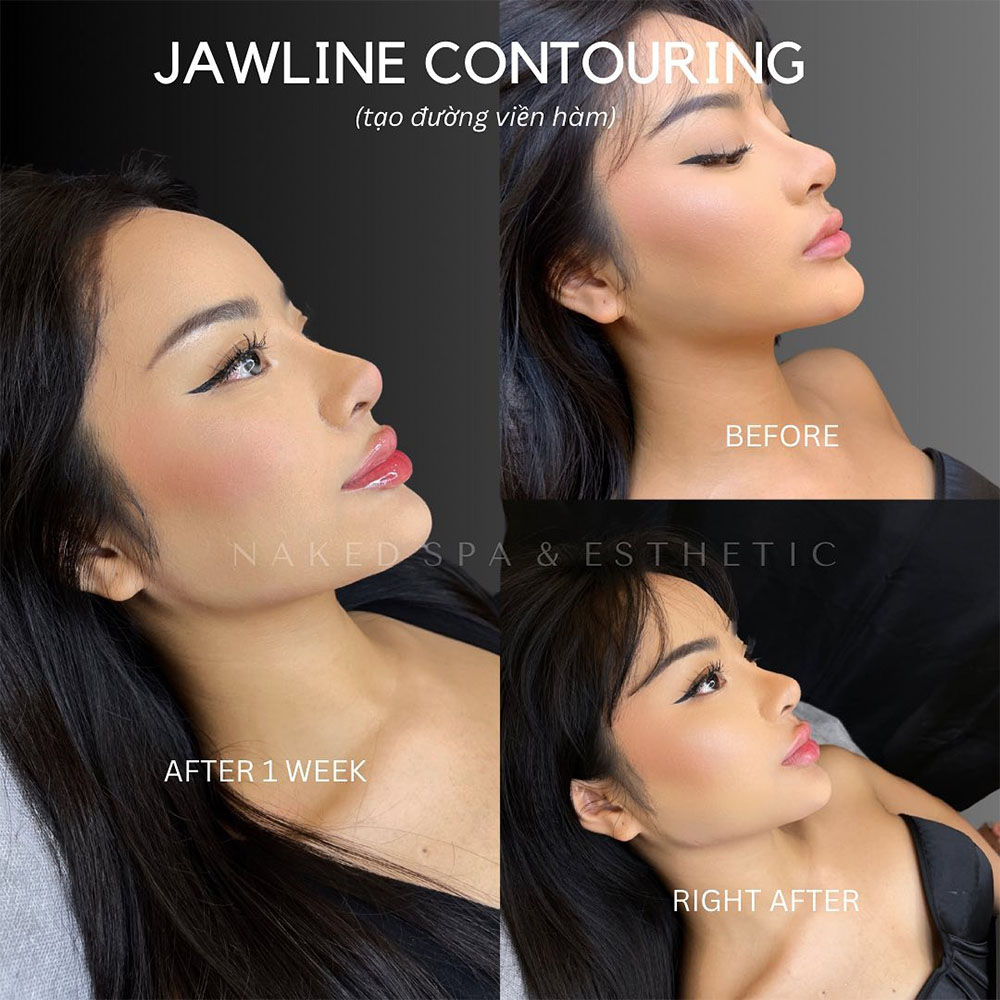
Anatomy of the Jawline: Key Zones to Target
Successful jawline contouring relies on an in-depth understanding of lower face anatomy. Key treatment areas include:
- Mandibular angle: Adding definition and projection here sharpens the transition from neck to jaw.
- Body of the mandible: Lengthening and straightening this area enhances lateral profile aesthetics.
- Pre-jowl sulcus: Filler smooths age-related hollowing and improves the jawline’s continuity.
- Chin: Often treated in tandem for balance and projection.
- Masseter region: Targeted with toxin when bulk reduction is needed for facial slimming.
Aesthetic outcomes depend on understanding the interplay between bone, fat compartments, and muscles, especially the masseter and platysma, while avoiding vital structures like the facial artery and marginal mandibular nerve.
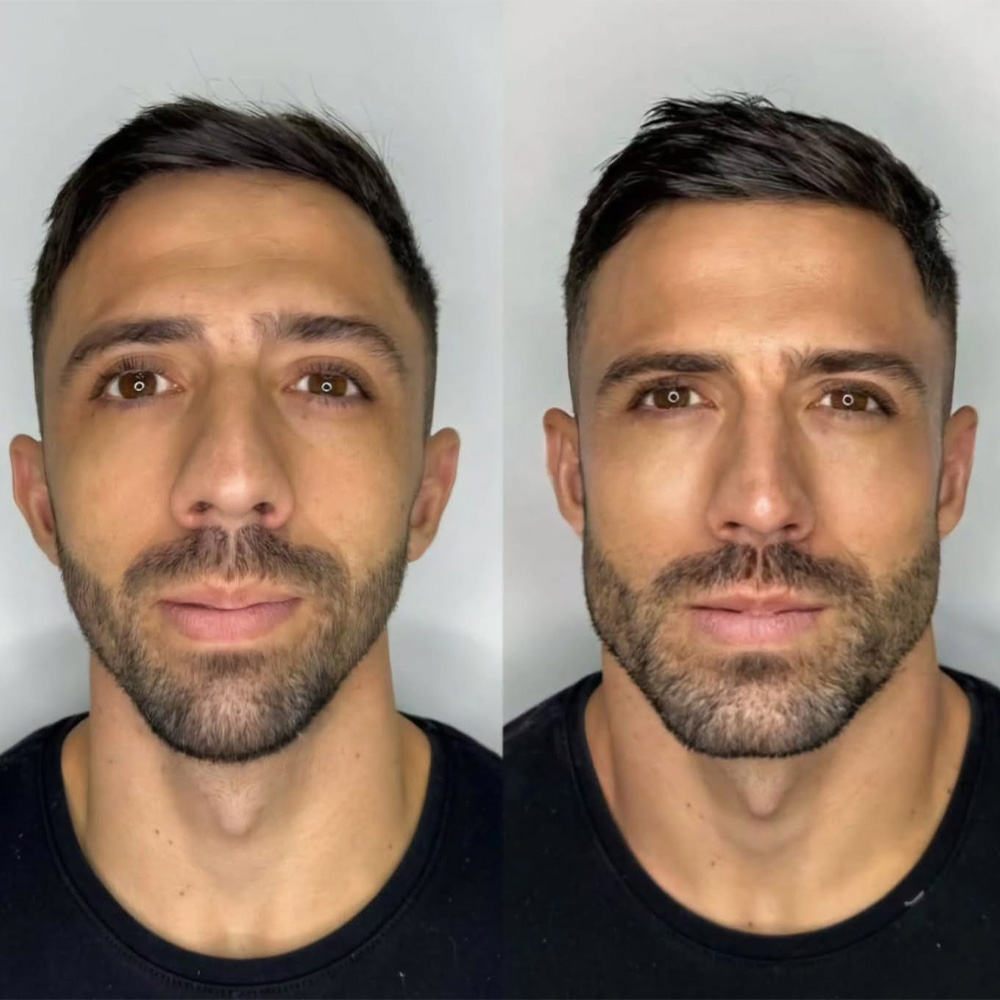
Filler Techniques for Jawline Definition
Using high-viscosity fillers such as Juvederm Volux, Radiesse, or Restylane Lyft provides the structural lift required for sculpting the jawline. These products are ideal for building angularity and support.
Key technique elements include:
- Supraperiosteal placement: Offers maximum lift and projection, especially over the mandibular angle and body.
- Layering approach: Combine deep bolus injections with superficial contouring to blend transitions and refine shape.
- Cannula vs needle: Needles are often used for precise placement on bone, while cannulas offer safety and reduced trauma in softer tissue zones.
Toxin Use for Jawline Slimming and Shaping
Botox for jawline contouring plays a powerful, complementary role. It’s not only about muscle relaxation, it’s also a tool for sculpting facial shape.
Two main applications:
- Masseter Botox: Ideal for patients with hypertrophic masseter muscles that widen the face. Slimming this area refines the jawline and softens the lower face, especially in women.
- Platysma treatment (Nefertiti lift): Toxin injected into the platysmal bands helps lift and tighten the lower face, subtly enhancing jawline definition.
Dosing varies based on muscle mass and patient anatomy. Results typically last 3 to 6 months. When combined with filler, the outcome blends structure (via volume) with shape modification (via muscle control).
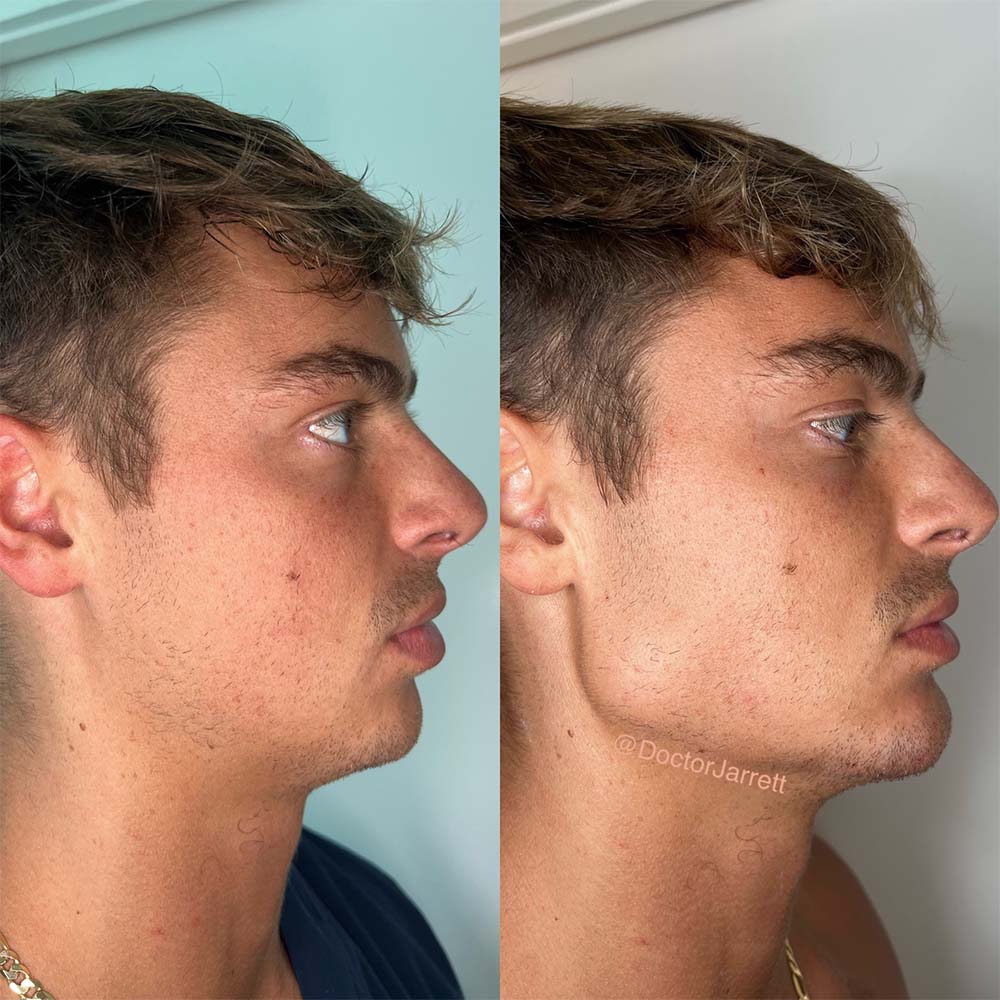
Patient Assessment and Treatment Planning
No two jawlines are alike. A tailored plan begins with understanding patient concerns and desired outcomes, whether that’s feminization, masculinization, or simply a more youthful look.
Assessment tips:
- Facial balance: Evaluate chin projection, jowl severity, and mandibular angles.
- Tissue characteristics: Determine whether the concern is due to volume loss, excess muscle, or skin laxity.
- Gender-specific goals: Men often want broader angles and prominent chins; women may prefer gentle curves and narrower jaw widths.
- Realistic expectations: Non-surgical contouring improves, but doesn’t replicate, surgical results. Communicate expected changes and maintenance needs.
Explore the available aesthetic courses on HubMedEd for in-depth facial mapping and patient photography tools to refine your planning.
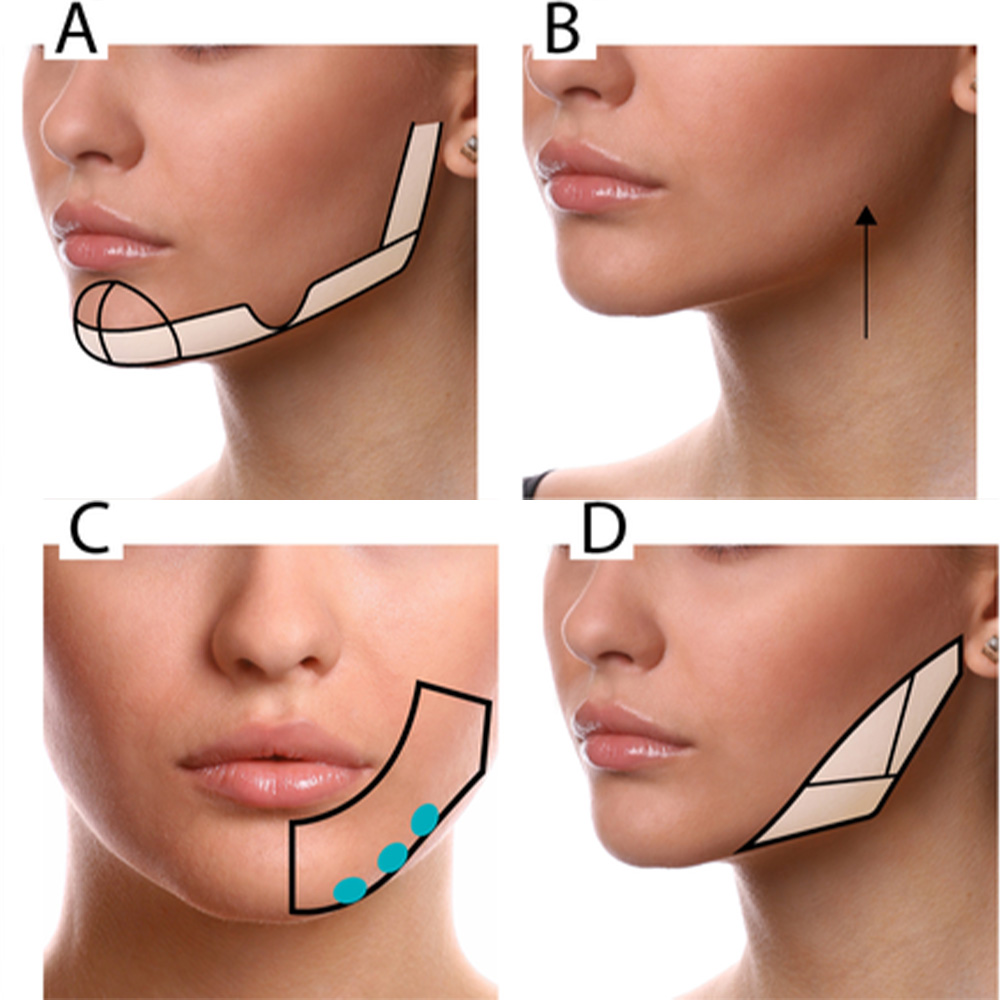
How Long Does Jawline Contouring Last?
Longevity depends on product type, treatment depth, and patient metabolism.
- Fillers: Typically last 12 to 24 months. Volux and Radiesse are among the longest-lasting due to their viscosity and cross-linking.
- Toxins: Effects last 3 to 6 months. Repeat sessions may be needed for optimal masseter size reduction or platysma lift.
Encourage patients to schedule follow-ups to maintain their desired contour and adapt treatment based on facial aging changes.
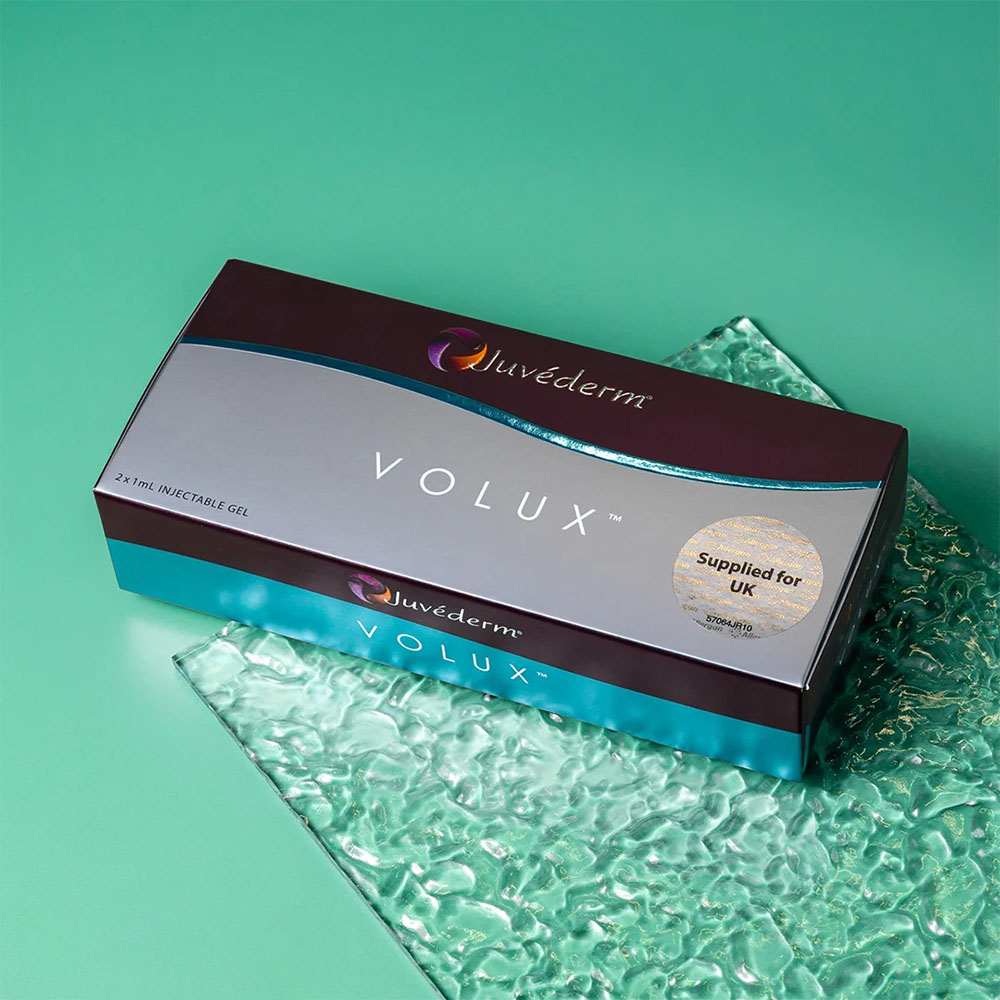
What Are The Side Effects of Jawline Contouring?
Most side effects are mild and temporary. Common and possible issues include:
- Swelling and bruising (especially near the mandibular angle)
- Tenderness or redness at injection sites
- Asymmetry from uneven swelling or filler placement
- Lumps or nodules, often from superficial injection
- Tyndall effect (rare in the jawline due to deeper placement)
- Vascular occlusion (serious but rare and requires immediate intervention)
When treating the masseter or platysma with neurotoxin, additional risks include:
- Muscle weakness beyond the intended area (e.g., affecting smile or speech if diffused improperly).
- Difficulty chewing or jaw fatigue when masseter toxin is overdosed.
To minimize risks, practitioners should use a precise technique, aspirate when appropriate, inject slowly, and always be prepared to manage complications.
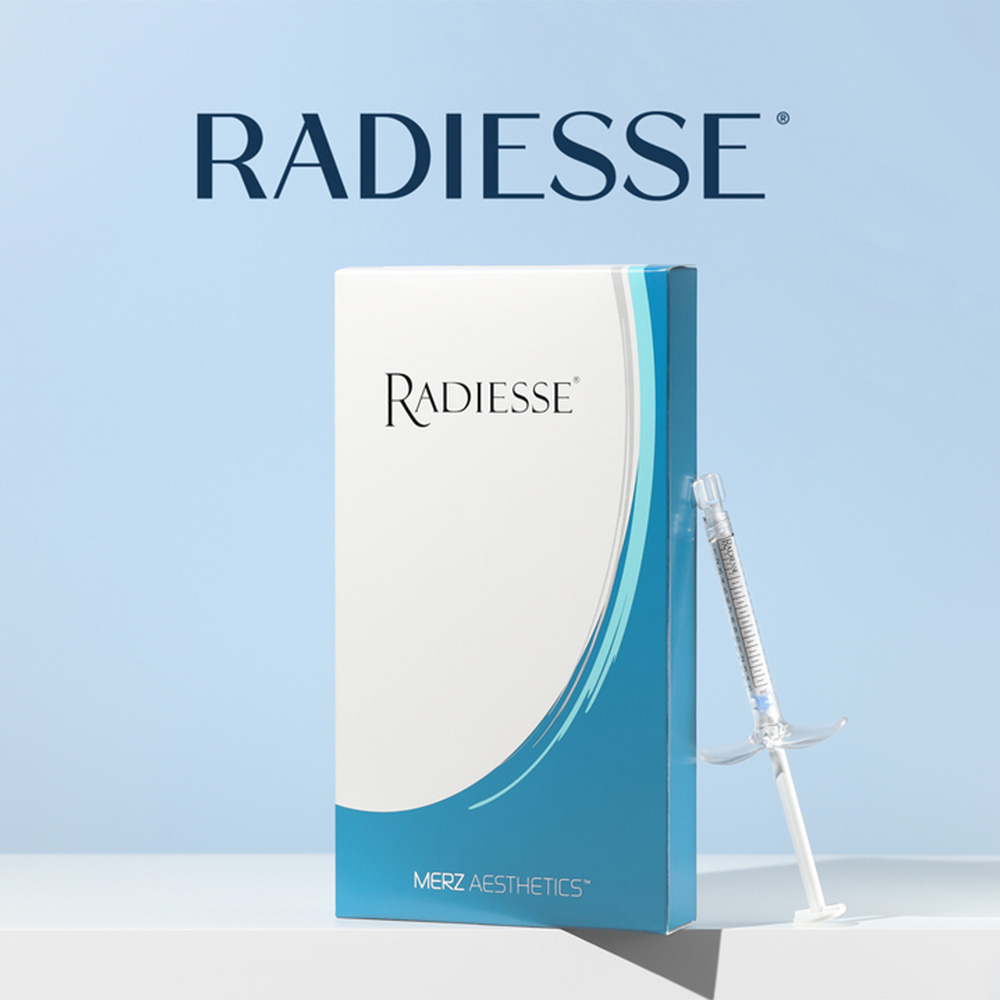
What Is the Recovery Time for Jawline Contouring?
Recovery after jawline contouring is generally quick, especially compared to surgical alternatives. Most patients can return to daily activities immediately after treatment, although minor swelling and bruising may last a few days.
Here’s what to expect:
- First 24–48 hours: Mild swelling, tenderness, or tightness along the jawline is common. Ice packs can help manage discomfort.
- Bruising may appear depending on the injection technique and patient sensitivity. Makeup can typically be used after 24 hours.
- Masseter or platysma Botox may take 5 to 14 days to show visible effects. Patients should be advised not to assess final results too early.
While results from filler are visible right away, optimal contour settles over 1 to 2 weeks as swelling subsides and the filler integrates with the tissue. Patients should avoid strenuous exercise, alcohol, or facials for the first 24 to 48 hours to reduce swelling and minimize migration risk.
It’s also important to educate patients on signs of complication, such as increasing pain, white patches, or skin discoloration, which could signal vascular compromise and require immediate attention.
Overall, most patients resume social activities within 1 to 3 days, with full results visible by week two.
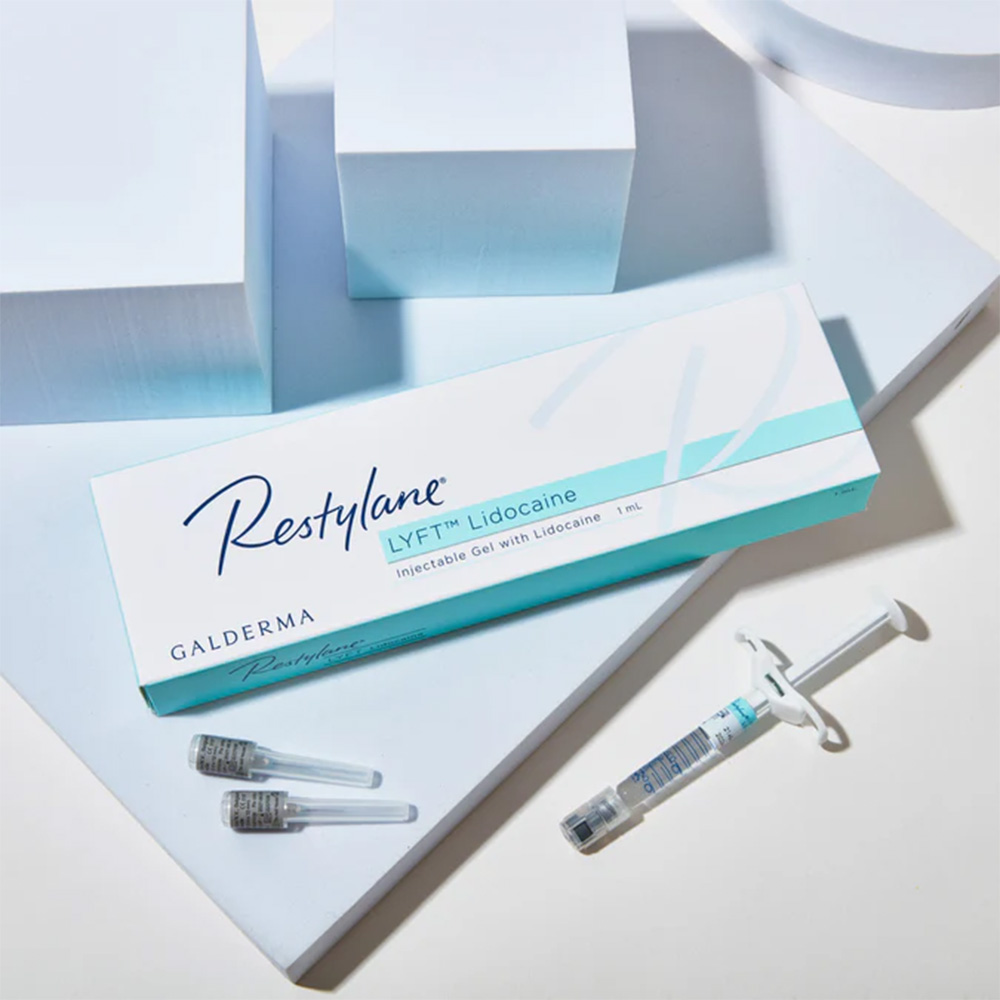
Conclusion
Jawline contouring with fillers and toxins provides a customizable, non-surgical pathway to facial sculpting. Whether defining a masculine lower face or restoring youthful contours in aging patients, the combination of filler and Botox for jawline reshaping offers both structural and dynamic results.
To deliver optimal outcomes, stay current with training in advanced injection methods, facial anatomy, and aesthetic planning. Explore our jawline filler training and Botox training modules on HubMedEd for hands-on videos, expert guidance, and case-based learning.
FAQs
How much does jaw contouring cost?
Prices range from $600 to $3,000 depending on the number of syringes used, toxins added, and clinic location.
How can I contour my jawline without surgery?
Filler and Botox are the most effective non-surgical tools. Other options include Kybella, skin tightening devices, and masseter slimming.
Is jaw contouring worth it?
For most patients seeking definition without downtime, yes. Results are visible immediately with minimal recovery time.
Can Botox sharpen the jawline?
Yes, Botox in the masseter and platysma can create a slimmer, more contoured jaw by reducing muscle bulk and lifting sagging areas.
Do double chin exercises work?
They may strengthen neck muscles, but they won’t remove fat or tighten skin. Kybella or filler treatments are more effective for submental contouring.
Sources
- Braz A, Eduardo CCP. Reshaping the Lower Face Using Injectable Fillers. Indian J Plast Surg. 2020;53(2):207-218. doi:10.1055/s-0040-1716185 https://pubmed.ncbi.nlm.nih.gov/32884187/
- Fakih-Gomez N, Verano-Garcia A, Porcar Plana CA, Muñoz-Gonzalez C, Kadouch J. Jawline Sharp Contouring With Hybrid Filler. Aesthetic Plast Surg. 2025;49(1):334-340. doi:10.1007/s00266-024-04226-4 https://pubmed.ncbi.nlm.nih.gov/39014233/
- Nikolis A, Enright KM, Cotofana S, Nguyen Q, Safran T. Comparative Trial Evaluating a High- Versus Low-Integration Hyaluronic Acid Filler for Contouring the Jawline. Aesthetic Plast Surg. 2025;49(1):31-42. doi:10.1007/s00266-024-04347-w https://pubmed.ncbi.nlm.nih.gov/39266684/
- Moradi A, Shirazi A, David R. Nonsurgical Chin and Jawline Augmentation Using Calcium Hydroxylapatite and Hyaluronic Acid Fillers. Facial Plast Surg. 2019;35(2):140-148. doi:10.1055/s-0039-1683854 https://pubmed.ncbi.nlm.nih.gov/30943558/
*This article is intended for licensed medical professionals. All protocols, dosages, and treatment insights referenced herein are based on published literature. The content is not intended to encourage application, diagnosis, or self-treatment of unlicensed individuals, and should not be used as a substitute for the clinical judgment of a qualified healthcare provider.
Disclaimer:
This article is intended for licensed medical professionals. All protocols, dosages, and treatment insights referenced herein are based on published literature. The content is not intended to encourage application, diagnosis, or self-treatment of unlicensed individuals, and should not be used as a substitute for the clinical judgment of a qualified healthcare provider.

